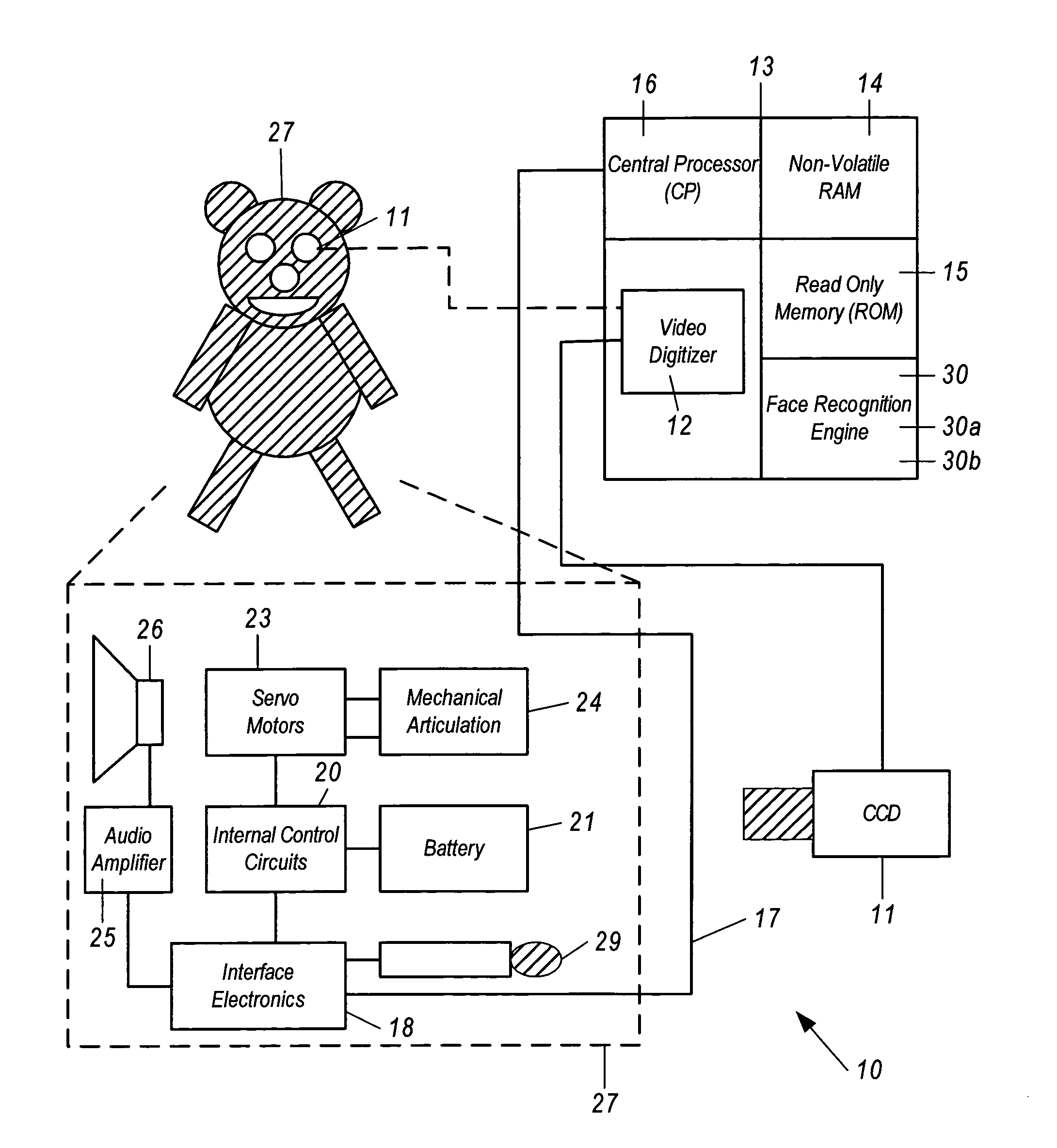Animated toy utilizing artificial intelligence and facial image recognition
a facial image recognition and toy technology, applied in the field of interactive toys, can solve the problems of inability to recognize inanimate objects, inability to run fast, and inability to meet so as to maximize the challenge and entertainment value of said toy.
- Summary
- Abstract
- Description
- Claims
- Application Information
AI Technical Summary
Benefits of technology
Problems solved by technology
Method used
Image
Examples
Embodiment Construction
[0035]Referring to the drawings, an apparatus for an articulated and animated toy capable of recognizing human users 40 and selected inanimate objects and interacting therewith of the present invention is generally referred to by the numeral 10. Referring to FIG. 1, the apparatus 10 includes a computer 13 having a central processor (CP) 16 such as those which are commercially available under the trademarks Intel® 486 or Pentium®, conventional non-volatile Random Access Memory (RAM) 14 and conventional Read Only Memory (ROM) 15. Computer 13 can be of a standard PC configuration such as those which are commercially available under the trademarks Compaq® or Dell®, or can be miniaturized and embedded directly in the toy 27 itself. Computer 13 is further operably associated with a video digitizer 12 and video camera 11. The video camera 11, mounted inside the toy 27, such as a teddy bear, doll or robot, can be a standard inexpensive Charge Coupled Device (CCD) camera, and the video digit...
PUM
 Login to View More
Login to View More Abstract
Description
Claims
Application Information
 Login to View More
Login to View More - R&D
- Intellectual Property
- Life Sciences
- Materials
- Tech Scout
- Unparalleled Data Quality
- Higher Quality Content
- 60% Fewer Hallucinations
Browse by: Latest US Patents, China's latest patents, Technical Efficacy Thesaurus, Application Domain, Technology Topic, Popular Technical Reports.
© 2025 PatSnap. All rights reserved.Legal|Privacy policy|Modern Slavery Act Transparency Statement|Sitemap|About US| Contact US: help@patsnap.com



